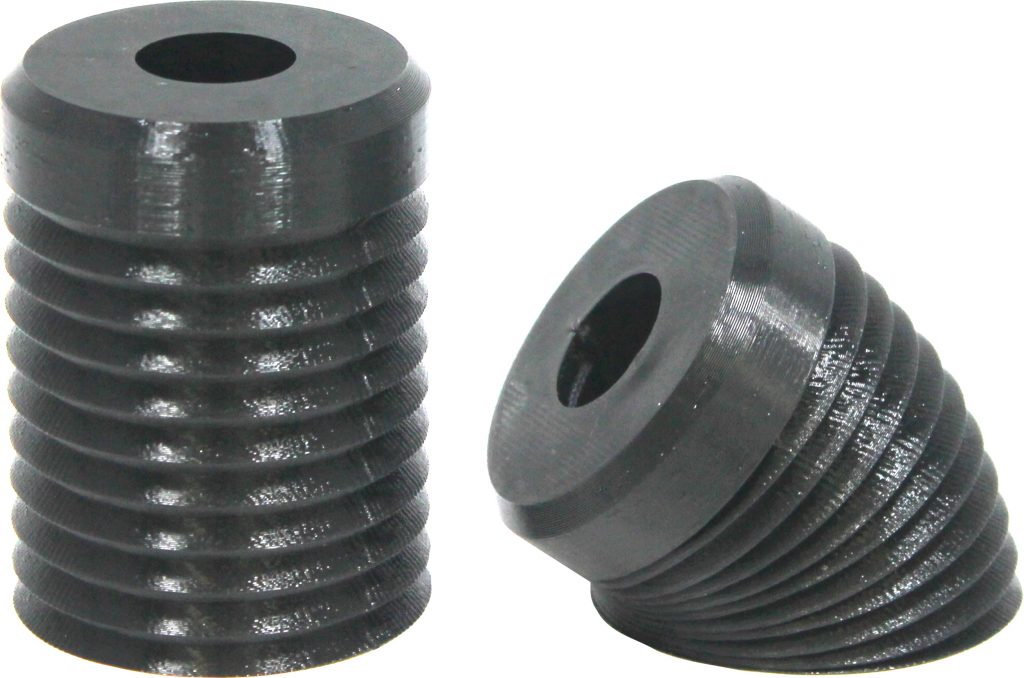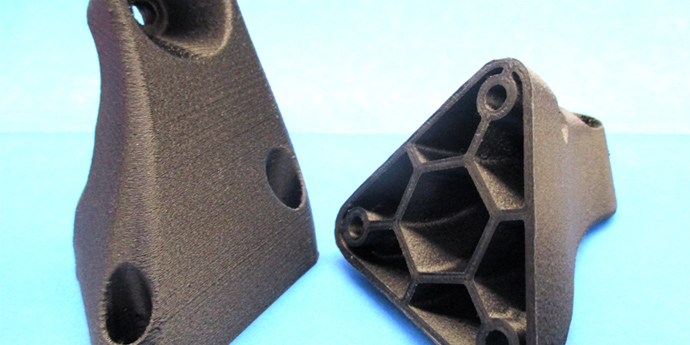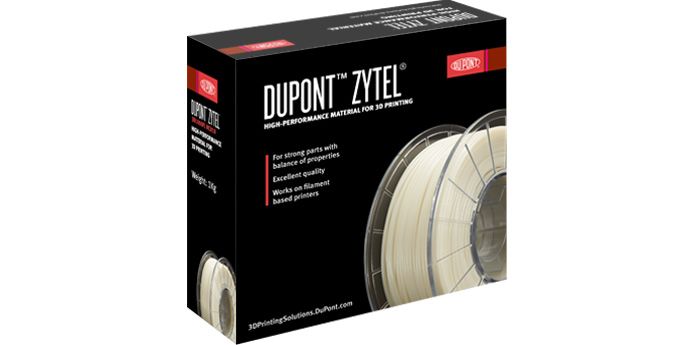Rapid 2019: Interview With Christophe Paulo of DuPont “bulk of the Material Extrusion market will be in pellet to parts”
DowDuPont is one of the largest chemicals companies in the world. The firm entered the 3D printing market cautiously and later than most through a partnership with Taulman. Making far less waves than big splash BASF or accelerating Henkel and not having the decades of 3D printing experience of SABIC, DSM, Evonik or Arkema, DuPont entered later than direct selling Solvay and Clariant. Whereas at other polymer and chemicals firms it increasingly seems that 3D printing is strategic, DuPont seems to be targeting practical material applications. No pie in the sky CEO pronouncements but rather functional materials. On the one hand the firm is making FDM filament in PA (polyamide), including insanely high GF load filaments.

I’m fascinated to see polymer and chemicals giants engage 3D printing in a completely different way. It will take us years to see whose methods and engagements were the most apt and successful. Go indirect? Partner a lot? Build big departments or invest in existing firms? Focus on OEMs or services? I’m enjoying every minute of learning about all of these firms and their completely opposite learnings, assumptions and plans. Blind gorillas trying to horse ride is this epoch if we see it through the eyes of these polymer giants. They have the same information available to them and the same general ideas but they completely do it their own way.
Right now DuPont Transportation & Advanced Polymers of DowDuPont’s Specialty Products Division is focusing on automotive ducting, semi-crystalline materials and flexible materials. We interviewed Marketing Manager for Industrial & Consumer Christophe Paulo to find out more.
Christophe told 3DPrint.com that, “What we are aiming to do is to make it simple for our customers to step into 3D printing.”
The company is developing a number of different pellet and filament grades of materials. DuPont’s focus for the moment is on material extrusion technologies (FDM). Uniquely the firm not only is focusing on filament producers but it is also looking to sell granulate. Granulate, the pellets that are used to make filament and are used for injection molding is sold to filament makers. DuPont however really believes on selling granulate to OEMs and filament makers to be sold on to end users. The company is a huge fan of granulate 3D printers such as the Titan.

Christophe explained that, “some of our materials are $100 per kilo but pellets you’re looking at $25 to $30 range per kilo” and that “you can print a lot of parts a lot faster and a lot cheaper with Titan3D or similar faster processes.”
DuPont is specifically looking for larger parts here on production where they’re looking at up to “10,000 parts” or more.
“If we start to do mass customization pellets make a lot of sense,” says Christophe.

Zytel automotive part
Pellet extruders have been around for a number of years. Technically not really perfected they’ve been a novelty. If Christophe is right and pellet extruders would make a big impact on the material extrusion market then this would mean a sea change for the 3D printing industry. Much material development, compounding, and production is being done by specialized filament companies such as Innofill3D, Mitsubishi, Colorfabb. A big switch to pellets would hit their margins very hard. This may also mean that distributors such as Resinex would be more inclined to sell direct to the market as well. Or more compounders could get involved in 3D printing. A lot of material extrusion innovation comes from filament companies. They are also the main center for knowledge exchange between end users, polymer companies and OEMs. Granulate would still have to be compounded and optimized for 3D printing through additives, and chemistries of the granulate would have to be optimized as well, but the impact on the filament makers and 3D printing ecosystem would be huge. For their own materials, DuPont had to extensively, “work on the chemistry to make it printable.“

The company sells both filament and pellets direct and through distributors. Along with Solvay, the firm is the only one to have a direct offering which is noteworthy.
“We are nonexclusive so if a filament company wants to use our pellets we supply the material.”
The company’s “offering consists of Nylon and TPE” and it’s looking at more materials. For now, they have Zytel with Carbon Fiber. This Polyamide 6/12 has a 20% Cabon Fiberfill. Polyamide with carbon fiber fill is a huge growth material for a lot of manufacturers since the stiffness and other properties are good.
Christophe mentioned that they “also have grades of GF 30% and 50% GF.”
These GF (glass filled) grades are similar to the materials used in automotive applications and familiar to companies in automotive.
The team really worked hard to, “make the material really easy to print and match properties with existing materials used by our customers.”
They’re positioning their material as much cheaper than PEEK but above ABS in price. It sells for around 89 Euros for a Kilo. It may not have everything PEEK has but it’s at a price that makes sense to use in bulk: “the right price for the right properties.”
If we look at the future Christophe firmly believes that “the future of 3D printing is in series and mass customization.” He also, rather uniquely, thinks that “the bulk of the Material Extrusion market will be in pellet to parts” and mentions that, “We really believe in pellet printers.” This kind of strong opinion in favor of pellets is absent at the other big polymer companies and a very notable position to take.
Subscribe to Our Email Newsletter
Stay up-to-date on all the latest news from the 3D printing industry and receive information and offers from third party vendors.
You May Also Like
Precision at the Microscale: UK Researchers Advance Medical Devices with BMF’s 3D Printing Tech
University of Nottingham researchers are using Boston Micro Fabrication‘s (BMF) 3D printing technology to develop medical devices that improve compatibility with human tissue. Funded by a UK grant, this project...
3D Printing Webinar and Event Roundup: April 21, 2024
It’s another busy week of webinars and events, starting with Hannover Messe in Germany and continuing with Metalcasting Congress, Chinaplas, TechBlick’s Innovation Festival, and more. Stratasys continues its advanced training...
3D Printing Webinar and Event Roundup: March 17, 2024
It’s another busy week of webinars and events, including SALMED 2024 and AM Forum in Berlin. Stratasys continues its in-person training and is offering two webinars, ASTM is holding a...
3D Printed Micro Antenna is 15% Smaller and 6X Lighter
Horizon Microtechnologies has achieved success in creating a high-frequency D-Band horn antenna through micro 3D printing. However, this achievement did not rely solely on 3D printing; it involved a combination...





























